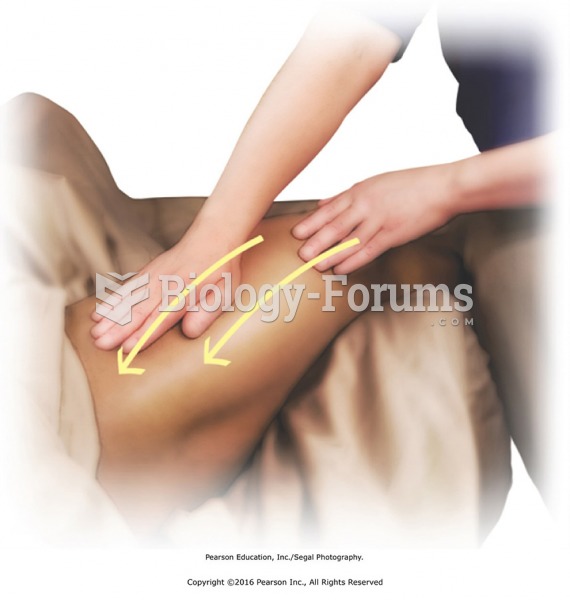|
|
|
Although not all of the following muscle groups are commonly used, intramuscular injections may be given into the abdominals, biceps, calves, deltoids, gluteals, laterals, pectorals, quadriceps, trapezoids, and triceps.
Most childhood vaccines are 90–99% effective in preventing disease. Side effects are rarely serious.
When blood is exposed to air, it clots. Heparin allows the blood to come in direct contact with air without clotting.
Hip fractures are the most serious consequences of osteoporosis. The incidence of hip fractures increases with each decade among patients in their 60s to patients in their 90s for both women and men of all populations. Men and women older than 80 years of age show the highest incidence of hip fractures.
The longest a person has survived after a heart transplant is 24 years.







